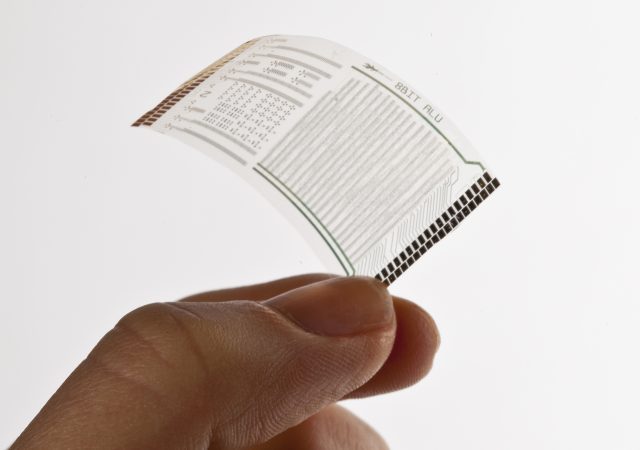Once upon a time, SEMICONs were essentially just for semiconductor manufacturing business and technology, and predominantly CMOS ICs. Back when we followed public roadmaps for technology to maintain the cadence of new manufacturing nodes in support of Moore’s Law, it…
Eloquent Executives Ecosystem Expositions
#cmc,#confab,#namedropping With dimensional scaling reaching economic limits, each company in the IC fab industry must rely upon trusted connections with customers and suppliers to know which way to go, and the only way to gain trusted connections is through attending…
RFID Playing Cards “Best Product” at Printed Electronics Europe
Cartamundi, imec and Holst Centre (set up by imec and TNO) recently won the Best Product Award at Printed Electronics Europe for their ultra-thin plastic RFID technology integrated into Cartamundi’s playing cards. In each card, the RFID chip has a…
Thermoplastically Deformable Electronic Circuits
Philips is testing a technology developed by imec and CMST (imec’s associated lab at Ghent University) to create low-cost 3D LED packages. As shown at last month’s International Microelectronics Assembly and Packaging Society (IMAPS 2015) meeting, these thermoplastically deformable electronic…
Bottoms-up ELD of Cobalt Plugs
As reported in more detail at Solid State Technology, during the IEEE IITC now happening in Grenoble, imec and Lam showed a new Electroless Deposition (ELD) cobalt (Co) process that is claimed to provide void-free bottoms-up pre-filling of vias and…
IoT and The ConFab 2015
The keynotes and other key speakers have been announced for The ConFab 2015, to be held May 19-22 at The Encore at The Wynn in Las Vegas.
IITC: New Materials for Advanced Interconnects
The 17th annual International Interconnect Technology Conference (IITC) will be held May 21 – 23, 2014 in conjunction with the 31st Advanced Metallization Conference (AMC) at the Doubletree Hotel in San Jose, California.
Organic Processors Offer Microwatt Applications
Printing low power-low performance microprocessors onto organic materials will open a wide range of cost effective alternatives to silicon-based embedded devices, but resolution remains a problem.
